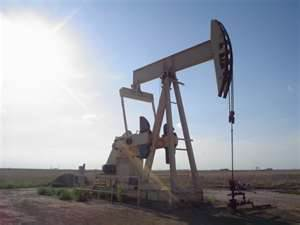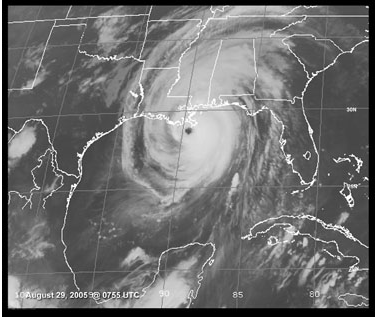By Common $ense Prepper
Okay, well Jed really means Middle America and millions are actually billions of dollars in economic boom from the recent “Oil Boom”. Imagine the wealth portrayed by Buddy Ebsen's character "Uncle Jed" (x) a hundred spread out over half a dozen states, tens of thousands of families, and hundreds of communities that were desperate just eighteen months ago. Just eighteen months ago these same communities were hemorrhaging jobs, businesses, and families as anything not nailed or tied down by generations of farming were running off to the big cities for chance and opportunity. This is not the case now because hundreds of people, tens of millions of dollars, and thousands of opportunities are springing up in each of these small counties. The “Oil Boom” of 2012 is here and turning the tide.
In 2010 Harper County, Kansas, as with many other counties in Middle America
lost population, a trend that was a hundred years in the making. For the past ten decades Harper County and hundreds of other counties in Americas heartland had lost population. For example the population of Anthony, Kansas in the 2000 census was around 2500 people and by the 2010 census it was down to 2300, a loss of 9.2%. Then between the years 2010 and 2012 almost 500 new people moved to Harper County, an estimated 8% increase in population.
lost population, a trend that was a hundred years in the making. For the past ten decades Harper County and hundreds of other counties in Americas heartland had lost population. For example the population of Anthony, Kansas in the 2000 census was around 2500 people and by the 2010 census it was down to 2300, a loss of 9.2%. Then between the years 2010 and 2012 almost 500 new people moved to Harper County, an estimated 8% increase in population.
On a recent trip to Anthony, Kansas to visit my wife's parents we were blown away by the impact of the recent oil boom. It was unbelievable I must have counted one hundred new automobiles, mostly Ford Trucks. This was not the community we had watched slowly shrink and disappear prior to leaving. It has been several years since we moved out of the area, but we try to return as often as we can. Just two years earlier my wife and I were talking about how everything was changing in Harper County, for the worse. With each trip we took there were fewer people, businesses, traffic, and virtually less of everything. The only thing that seemed to increase were for-sale signs in front yards.
It was fairly heart breaking to see the little towns between where we live now, and the small town of Anthony, Kansas slowly disappear. Everybody was leaving for opportunity elsewhere and many of those who stayed had to carpool fifty miles to either Wichita or Wellington, Kansas to find employment. The population of Harper County has shrunk every decade for almost one hundred years, but things have changed!
On this trip everything was different. We passed several farmers we knew well when we lived in the area all with brand new Ford Trucks. I have not seen this many shiny new trucks concentrated outside a showroom in my life. Upon each pass just like any other time we gave the country-boy wave, (hand on top of steering wheel, and four fingers raised in greeting), you see everybody waves this way in small towns. They may not know you personally but they have no problem in giving you a greeting. Of course seeing all these new vehicles on the road was nothing compared to what we witnessed upon entering Anthony.
What we seen was a transformed town, or at least one in the process of a makeover. The for sale signs that previously littered the yards were gone, in fact I did not see a single for sale sign. Several homes had new vehicles, repair work being done, and the businesses were alive and well as several of these new vehicles filled the parking spaces. Upon further investigation I learned that most retail, grocery, and restaurants were experiencing 10% to 20% increases! Previously half of downtown was vacant or in need of revitalization, now new paint, brick, new signs, and everything was beginning to look much like it did decades earlier. Even Anthony Lake, a once proud part of the areas tourism that had gone through decades of fill was now being dredged out. It was unbelievable to see.
My wife and I knew changes were happening, my mother in law had said as much on the phone, so we were not surprised at the work being done. What we were surprised at was the almost complete transformation, there was even a new Hotel and the other two were filled to capacity. You absolutely could not find a place to rent if you wanted to. It reminded us of when the old Anthony Downs were operating. People came from all over the country to watch and place money on the races.
Yip things have changed and the people of this area owe it all to the “Oil Boom”. Even though the majority of oil money goes to farmers and land owners, that money is then circulated throughout the community when they purchase items with their new found wealth. So everybody gets a piece, store owners, waitresses, a handful of lucky car salesman that were left in the entire county, hotels, and just as any other community they benefit with more tax money to schools, private grants from oil companies, and much more! Let us not forget the wages paid to oil workers!
Many oil workers travel with the company so these are not new jobs created in a community, even though oil companies do hire many locals. My area is also experiencing part of the “Oil Boom” and our unemployment is around 4%, in towns
like Alva, Oklahoma is it less than 1%. So many jobs are created, but lets get back to the dollars.
like Alva, Oklahoma is it less than 1%. So many jobs are created, but lets get back to the dollars.
Nationally, the average salary for an oil worker is $100,000.00 There were not to many jobs that paid this in Anthony, Kansas prior to the “Oil Boom”. Also it is important to note that most oil workers do not have to pay their own room and board because companies often give them a $500 - $2000 a month living expense, depending upon the area. Needless to say this has caused the rent to rise throughout the area as home owners try to cash in.
Now your probably asking, why is this all important! Why do you need to know what is transpiring in a town you may never have heard of? Well the reason this is important is because these oil companies are giving you a sneak peek at what a Romney Presidency and energy policy might look like. You see Romney also wants to bring oil, natural gas, and coal back, make America 100% self reliant. He has been touting this energy bill on the campaign trail for months, and it has received little attention. Romney claims he can create 12 million new jobs, full time jobs. Well I have to say that if he goes all out on oil drilling, natural gas, and coal we may see many towns and cities from California to Virginia become revitalized as this new wealth flows in. Energy is by far the greatest
source of revenue this country is missing out on.
source of revenue this country is missing out on.
Energy is nearly 1/6 of Americas economy. We need petroleum to make electronics, tires, automobiles, aircraft, many foods, ship almost everything we consume and there is no replacement. It is absurd for the current Obama Administration to take a stance of less oil, natural gas, and coal. As you will recall, then candidate Obama in 2007 claimed that; “under my administration energy prices would necessarily skyrocket”. We are constantly being buried under this administrations desire to play energy ideology with taxpayer money. We are bombarded with higher prices at the pump, at the grocery store, and higher energy bills for our homes. President Obama claimed during the @Debate2012 with @CNNCrowley that he took federal permits away from oil companies, “if you do not use it then you lose it”. When this president decided to eliminate permits on federal land, he cut the number of locations that oil companies would be able to drill in the future, and when you cut the ability to acquire more product, the price “necessarily skyrockets”. This is all part of his plan!
I have never seen a President as hostile to any industry as the current administration. He picks and chooses who to support with taxpayer money, but absolutely refuses oil companies the right to use their own. This administration has a vendetta on fossil fuels and it has nothing to do with Al Gore’s “Global Warming” or subsidies for oil companies. If this president did not want subsidies to be wasted he would pay less attention to the $2.4 billion given to oil companies and more to the $90 billion he flushed down alternative energies of Solyndra, aka Obama Campaign Donors. The current administration has illustrated its will to end oil, natural gas, and coal many times, and if President Obama were to be reelected he will have no constraints of an upcoming election and public opinion to worry about.
Mitt Romney claims he wants to create energy independence for the United States by using all sources, and I have no reason to doubt his word. Mitt Romney has a record of working with everybody, which I feel will play out in his policies. Mitt Romney is a business man with decades of investing and work with entrepreneurs under his belt. A vote for Mitt Romney is a vote for Energy Independence! A vote for Mitt Romney is a vote for Self Reliance!
Resources
"The World Almanac; And Book of Facts, 2012". World Almanac Books 2012. New York.
http://money.cnn.com/2012/05/23/pf/america-boomtown-kansas/index.htm
http://www.kake.com/home/headlines/Anthony_KS_Welcomes_Booming_Business_149919255.html
http://www.dailyfinance.com/2012/05/28/farmers-hit-the-jackpot-in-kansas-oil-boom/
Yahoo. http://images.search.yahoo.com/search/images?_adv_prop=image&fr=yfp-t-701-1&va=public+domain+images+of+oil
http://images.search.yahoo.com/search/images;_ylt=A0PDoX1keoVQPlcAKhOJzbkF?p=public+domain+images+of+wheat+farming&fr=yfp-t-701-1&ei=utf-8&n=30&x=wrt
"The World Almanac; And Book of Facts, 2012". World Almanac Books 2012. New York.
http://money.cnn.com/2012/05/23/pf/america-boomtown-kansas/index.htm
http://www.kake.com/home/headlines/Anthony_KS_Welcomes_Booming_Business_149919255.html
http://www.dailyfinance.com/2012/05/28/farmers-hit-the-jackpot-in-kansas-oil-boom/
Yahoo. http://images.search.yahoo.com/search/images?_adv_prop=image&fr=yfp-t-701-1&va=public+domain+images+of+oil
http://images.search.yahoo.com/search/images;_ylt=A0PDoX1keoVQPlcAKhOJzbkF?p=public+domain+images+of+wheat+farming&fr=yfp-t-701-1&ei=utf-8&n=30&x=wrt



 RSS Feed
RSS Feed